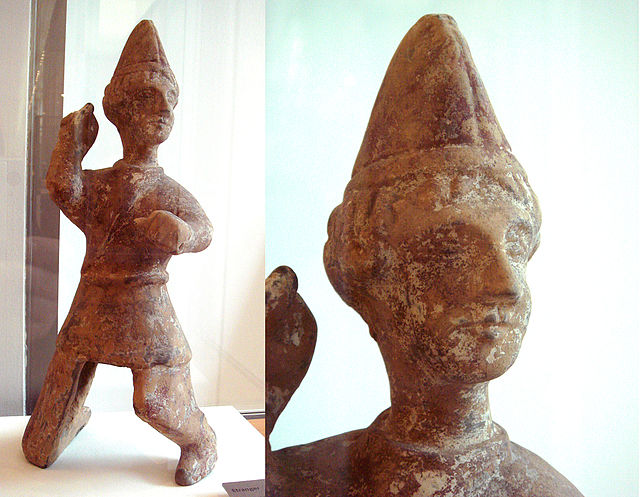Hufu, also referred as Hu clothing, nomadic dress, 'barbarian' clothing or dress, or foreign dress, is a generic term which refers to any clothing which was worn in ancient China and its surrounding regions by non-Han Chinese people. This term is also used to refer to clothing of foreign origins in ancient China. The introduction of Hufu-style garments and attire in China occurred by the time of King Wuling of Zhao.
A foreign Sogdian soldier wearing a curved collar (曲领) short robe, Eastern Han, early 3rd century.
Figurines from Northern Wei. On the left: Foreign fashion lapel robes On the right: Foreign-influenced or foreign-style cross-collared robes closing to the left side instead of the right side. Traditionally, Chinese style upper garment closes to the right.
Some paintings of the Ming dynasty depicts the Han Chinese with zuoren clothing, an atypical feature
Xiongnu leather robe closing to the left side (zuoren), Han period.
Hanfu, are the traditional styles of clothing worn by the Han Chinese. There are several representative styles of hanfu, such as the ruqun, the aoqun, the beizi and the shenyi, and the shanku.
a section of The Night Revels of Han Xizai, painted in the 10th century.
Wanli Emperor in mianfu regalia
Ming Ruqun stored by the House of Confucius
A group of musicians in Qixiong; Five dynasties.








